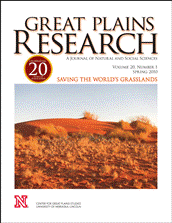Center for Great Plains Studies

Great Plains Research: A Journal of Natural and Social Sciences (through 2013)
Date of this Version
Spring 1999
Document Type
Article
Abstract
This study compares recent trends in family structure between the nation and the northern Great Plains states of Montana, Nebraska, North Dakota, and South Dakota, using census data from 1950 to 1990. I focus on patterns in two-parent and non-two parent families, and on married women in the labor force, to evaluate Popenoe's thesis that the American family has been declining since 1960. Two explanations for the differences from national trends have been proposed for families on the Great Plains: they are exceptions to national trends or they only lag behind national trends. Analysis of the rate of change from the previous decennial censuses 1930-1990 suggests that the experiences of families in the northern Great Plains states lagged rather than differed significantly from national trends. Finally, I discuss three major problems with Popenoe's thesis of "family decline": definitions, applications, and lack of historical context.


Comments
Published in Great Plains Research 9 (Spring 1999): 145-63. Copyright © 1999 The Center for Great Plains Studies, University of Nebraska–Lincoln. Used by permission. http://www.unl.edu/plains/publications/GPR/gpr.shtml\